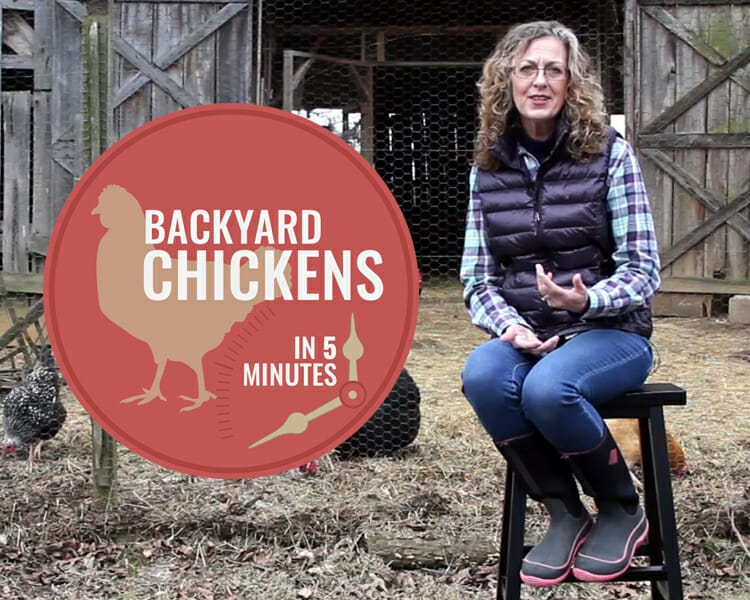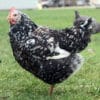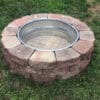How big should your coop be? What should it look like?
Where should you put it? Should it be permanent or movable? These are all questions you need to consider when planning your coop.
General Tips
Let’s start with some general tips.
Most people think only about their current flock and get a coop just big enough for that number. But, you should be thinking about the future. Most people add to their flocks over time and you don’t want to be limited by a coop that’s too small.
Don’t rule out repurposing things. You’d be surprised what you can find on craigslist and other classified advertising sites.
As you think about your coop design, remember that chickens poop…everywhere! So, try to limit the number of horizontal surfaces inside your coop. The more horizontal surfaces, the more poop you’ll need to scrape.
Assuming your coop is a permanent building and not a movable one, you will be going in and out of it frequently. If possible, both your coop and run should be tall enough for you to stand up in. Your back will thank you!
 Permanent Versus Movable
Permanent Versus Movable
Next, let’s talk about permanent versus movable coops.
A permanent structure will generally be warmer, drier and larger, giving you more space for more chickens. Permanent structures are typically more solid in construction, will last longer and be easier to maintain.
They also make it easier to protect your flock from weather and from predators.
Movable coops, commonly called “chicken tractors,” also have advantages. For starters, since they are usually smaller they can be less expensive and take less time to build.
If you don’t let your flock range, a movable coop will give them more variety. They will get to explore different parts of your yard and more importantly, get a varied diet that includes bugs, seeds and grass.
Chicken poop will fertilize your lawn, and you don’t have to worry about changing their bedding. Just move to a new location.
Keep in mind that compared to permanent structures, a basic chicken tractor won’t offer as much protection from the weather and from predators. Put some thought into your tractor design to ensure your chickens are protected from the cold, heat, wind and rain, as well as predators.
Another consideration is that you need to keep moving them, even when it’s inconvenient. (For instance, in the dead of winter.)
If you don’t move the tractor every couple of days, your chickens will eat the grass to the point of denuding your yard. The bigger issue, however, is your chickens’ health. If your tractor doesn’t have a bottom and your chickens can’t get away from their own poop, it will create a health hazard.
So, first decide what type of structure you want: permanent or movable. And, if you can’t make up your mind, do both. Your chickens will love it!
 Placement
Placement
I opted for a permanent coop and decided to put it behind our garage, which is about 50 feet away from our back door. I chose this location because it couldn’t be seen from the street, provided a natural windbreak and was very convenient to get to even in the winter.
If you can, place your coop where your chickens will benefit from the morning sun but be shielded from the harsh afternoon sun.
You might want to utilize deciduous trees in your coop placement. For instance, positioning your coop under a tree will provide a block from the harsh afternoon sun during the hottest months. But in the cooler months when the leaves have fallen, the sun will filter through the barren tree and warm the coop.
Also, you want to ensure good drainage. Don’t put your coop in a low spot where rainwater will collect. Having it on a high point where there is also a slight grade will help keep things dry.
If your coop is a permanent structure, it is best that it has a bottom rather than a dirt floor. This will prevent predators from tunneling under it. If you have the money or capacity to do so, you could pour concrete. But, most chicken owners just use wood.
If your floor is wood, you should raise the coop off the ground. This will prevent moisture from being retained under your flooring, which can lead to wood rot. You may want to raise it enough for your flock to sit under or even walk under, especially if you don’t have other shady places for them to go to get away from the hot sun.
To raise my coop, I used cinder blocks placed in a rectangular pattern, with a couple in the middle for support.
Size
So, how big should your coop be? For your hens to maintain good health and a good disposition, your coop should have a minimum of 4 square feet (or .37 square meters) per chicken. To measure area, you simply multiply length times width.
My first coop was 7½ by 4 feet, a total of 30 square feet (or 2.8 square meters). I had six chickens, meaning 5 square feet (.47 meters) for each one — above the recommended minimum and plenty of room for everything else I needed inside the coop.












